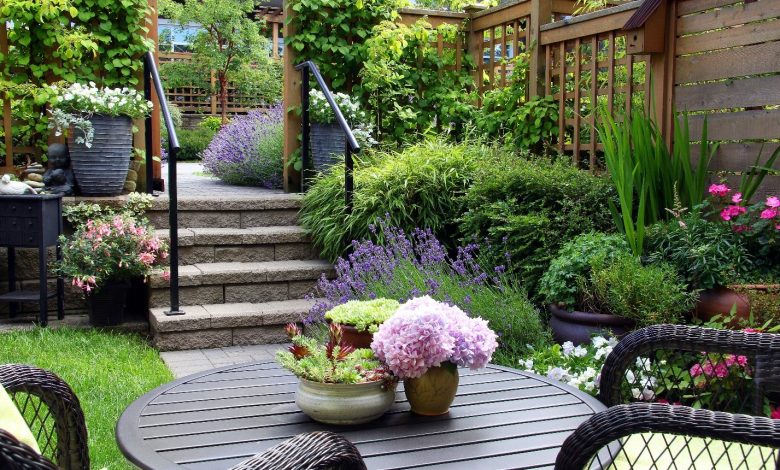Enhancing Your Outdoor Oasis: A Guide to Garden Landscaping

Garden landscaping is an art that turns the outdoors into beautiful, functional spaces. Whether a small backyard or a vast country estate, the landscaping scheme can provide an attractive background for your home and a peaceful haven for you and your family. This handbook will discuss the principles of garden landscaping, from design ideas to plant selection and maintenance suggestions, enabling you to construct an attractive outdoor paradise.
Design Principles
Before planting and building, it’s important to have a clear design for your garden. The following principles can be taken into account:
●Balance and Symmetry: Balance all its parts regularly to bring out the orderly feeling of the garden landscaping. Symmetrical designs tend to be formal, while asymmetrical arrangements deliver a modern, more natural look.
● Scale and Proportion: Select plants and other features for your garden by their size. To avoid crowding the area with overly large elements that dwarf everything else
● Unity and Variety: Create a consistent appearance by repeating colours, textures and shapes throughout your garden. Add variety with different types of plants or materials.
●Focal Points: Focus on the most important parts of your garden landscaping with central details such as sculptures, water features or choice specimens. This draws the eye outward and creates a sense of depth.
10 ways to sell a Garden Landscaping Design
Plant Selection
Choosing the right plants is key for successful garden landscaping. Consider the following factors:
● Climate and Light: Select plants that are well-suited to the weather in your region, particularly when it comes to the amount of sun they receive
● Soil: Soil quality is critical. To improve poor drainage and texture, add organic material such as compost.
● Skilled plant maintenance: Choose plants that fit your schedule and skill level. A garden maintenance service near you can be the best option for busy people.
●Seasonal Interest: As for plants of year-round interest, include blooms, foliage, and textures so that your garden looks colourful throughout the year.
Selection Criteria For Plants
● Select a mix of evergreen and deciduous plants to provide year-round interest in your garden.
● Choose plants with similar watering and light requirements for easier maintenance.
● Bring in some native plants to encourage the local ones and to support the ecosystem.
Hard Features
● Link hard elements of your garden design together with hardscaped elements such as retaining walls, pergolas, and arbours.
● Maintain a rustic and organic feel using natural materials: stone, gravel, or wood.
● Seating areas, fire pits, and outdoor kitchens could be integrated to transform the garden into a place for family and friends to enjoy together.
Water Conservation
● A rain garden or rain barrel captures and stores rain for irrigation.
● Choose drought-tolerant and established plants that do not need as much water.
● Use mulch to keep the soil moist; thus, save both labours for frequent watering time spent watering plants.
Seasonal Interest
Use various blooming annuals, perennials and shrubs that line the business district.
Mix tempting edible berries among the gently bending branches and colourful bark for visual interest during the winter months.
Garden Theme
For instance, a themed garden landscaping could be established, such as a butterfly garden, herb garden, or succulent garden, to honour what you love. The plants found in these gardens are often your favourites and help show off some of your other interests.
To bring harmony to your garden or space, place ornaments and themed decor elements, such as statues or plants, in the garden.
Lighting Design
Outdoor lighting can showcase the critical highlights in your garden, such as paths, trees and water features.
Use solar-powered lighting to light your garden and keep energy consumption down.
Maintenance Schedule
For instance, create a regular maintenance list that includes weeding, pruning, fertilising and mulching.
As you work in the garden, watch for pests and diseases and take quick action to prevent the loss or damage of your vegetables.
Garden Safety
Paths should be well-lit and free of litter or uneven areas that may cause trips.
Use non-toxic pest control methods to safeguard your plants and the wildlife they rely on.
Wellness in the Garden
A sensory garden is characterised by its plants, which excite the senses. These include fragrant flower textures in foliage not found elsewhere and rustling grasses—all of which contribute to contentment and health.
Elements like a meditation corner, yoga deck, or running water feature for stillness will build peace into your everyday world.
Community and Educational Gardens
Establishing a community garden or educational garden cannot only inherit and promote sustainable gardening practices but also engage with the surrounding community. The garden is also like an outdoor classroom in which children and community groups can study native plants and insects that live in the wild, such as teaching materials (as well as not all people have), and how to maintain a sustainable environment.
In Summary
Gardening landscaping creates a beautiful and harmonious space that can bring peace to life. By following these principles and taking note of the advice given, you will create a garden landscaping that has the best of both worlds: not only pleasing to look at but providing endless enjoyment for years ahead.




